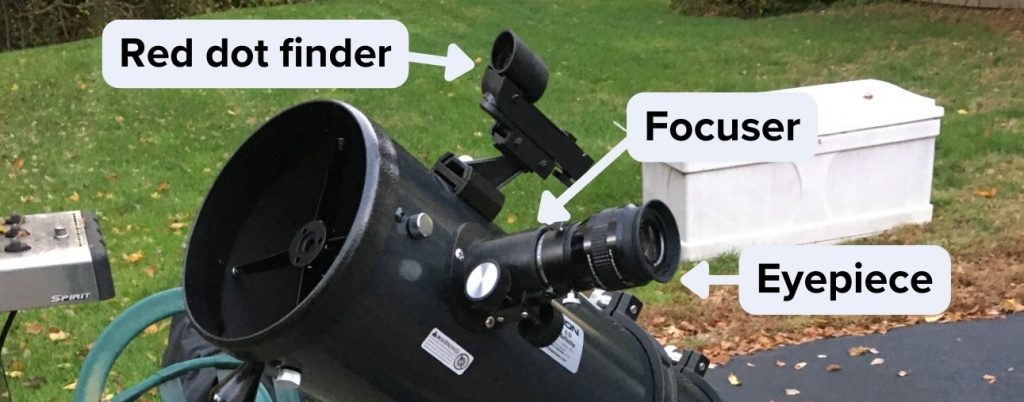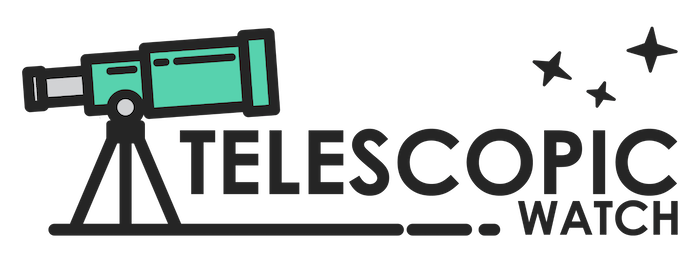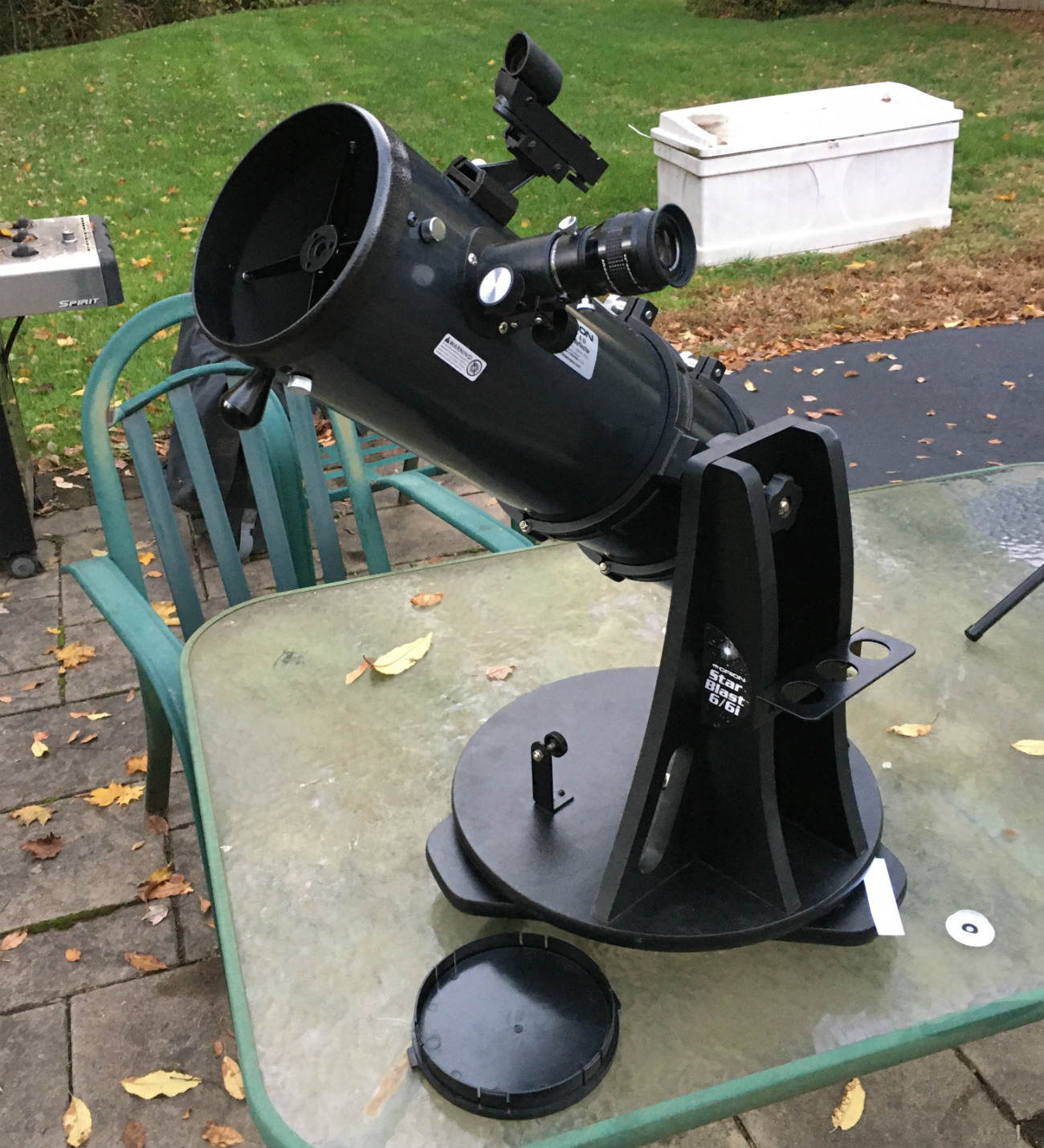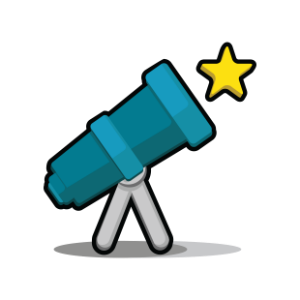The Implications of Low Focal Ratio of f/5
The Orion StarBlast 6 is a 6” (150mm) f/5 Newtonian reflector with a 750mm focal length. I found this similar optically to the 150mm f/5 tabletop scopes from Sky-Watcher, Bresser, and a variety of other 150mm f/5 Newtonian reflectors.
Unlike regular 6” Dobsonians, which have a focal ratio of f/8 and a focal length of around 1200mm, the StarBlast 6 is a stubby f/5 with a focal length of 750mm. Consequently, compared to the free-standing 6″ Orion XT6 Dobsonian, the StarBlast 6 produces 37.5% lower magnification and a 60% wider field of view, regardless of the eyepiece type or focal length. I derived these percentages from their respective formulae. Additionally, the tube is much shorter in StarBlast 6.
However, at a low focal ratio of f/5, three more issues could happen:
- You’re beginning to run into coma, an optical aberration distinctly recognised when stars appear with comet-like tails near the edges of the field of view.
- Cheap eyepieces will struggle to produce sharp images across the entire field of view, which is one reason why you can see me using a costlier Explore Scientific 82° eyepiece with the StarBlast 6 in the below image.
- At a low focal ratio, I always find collimation to be a bit more of a pain. All Newtonian reflector telescopes require minor adjustments from time to time to ensure that the mirrors are properly aligned to provide the best view, which is called collimation. The collimation process is not hard to do and with a little practice, it only takes a few minutes. Orion includes a collimation cap for this task.

The Upgraded Focuser
The focuser on the Orion StarBlast 6 was finally upgraded to a 2” rack-and-pinion unit in 2023 from the previous 1.25″ version. This focuser is definitely not as smooth as a Crayford design but I’d say that it works well enough.
The increase in the eyepiece barrel diameter from 1.25″ to 2″ allows the usage of 2” wide-angle eyepieces that have an absolutely huge field of view. But the said eyepieces can add up to a significant proportion of the cost of the StarBlast 6 itself, as well as looking a little silly on such a small scope.
There is also a removable extension tube that allows for enough focus travel that a coma corrector will work in this telescope if you wish.
The Mediocre Eyepieces
The Orion StarBlast 6 includes two Plossl eyepieces, each with a 52-degree apparent field of view: a 25mm for 30x and a 10mm for 75x.
I find these eyepieces to be a little lower in quality than the old Sirius Plossls Orion used to sell in the pre-2023 StarBlast 6 models. While the newly introduced eyepieces are functional, they have some glare/internal reflections and certainly aren’t the sharpest. However, I think they will suffice.
I also need to warn you that the 10mm is very short on eye relief, which is typical of the Plossl eyepiece design. Short eye relief means it requires you to jam your eye into the lens to take in the full field, which is rather uncomfortable.
Of the two, this 10 mm with 75x magnification is your high-power eyepiece. However, a scope of this aperture is capable of much higher power. In the future, I would recommend you plan for eyepieces for at least 160X and perhaps higher. Above that level, the atmosphere will start to become the limiting factor so I can’t tell you exactly what the maximum useful magnification will be for your location and situation.
A 150 mm aperture telescope would normally be rated up to 300X, but atmospheric conditions will vary from night to night and may limit you below that. Build your eyepiece set over time as you learn what your local situation will allow.
Other Accessories
You also get a red dot finder to aim the Orion StarBlast 6, which works but has a rather small window and difficult-to-use adjustments. I believe replacing it will significantly improve your viewing experience.
Lastly, a basic smartphone adaptor to take photos of the Moon through the eyepiece is supplied with the StarBlast 6, along with a basic Moon map and a star chart showing the locations of 600 deep-sky objects that can be seen with the telescope.
Mount

The base or mount is a “tabletop” Dobsonian-style altitude/azimuth or AltAz mount, the same as its smaller cousins. AltAz means the optical tube pivots up and down while the base rotates left and right in a Lazy Suzan turntable style. Sticklers will note that it’s technically a single-arm fork design, with the scope pivoting up and down on a single bolt and Nylon/felt bushing while it moves in azimuth (left-right) on Teflon pads as in a Dobsonian.
The design makes the StarBlast 6 very easy and intuitive to use.
It also includes a tension adjustment knob, which allows you to set the right friction so that the optical tube does not move on its own. If you purchase additional eyepieces, a Barlow lens, or other accessories that go in the focuser, you will likely make adjustments to this knob during the night to compensate for the changing weight and balance.
The StarBlast 6 optical tube attaches to the mount with a pair of tube rings. The advantage of the tube ring mounting method is that I can rotate the optical tube within the tube rings to get the eyepiece into the most comfortable position. They shouldn’t be clamped super tight, as you want to be able to rotate that tube or slide it forward or back to gain the best balance and eyepiece position.
The large footprint of the mount and the weight of the whole package may lead to some difficulty in finding a suitable surface to set the scope on, which I’d argue is the mount’s biggest drawback. Some people love the tabletop design and some do not. This is purely a matter of personal preference.
The new 2023 version of the StarBlast 6 lacks the ability to be upgraded to an Intelliscope like its predecessors and is a manual-only instrument. Intelliscope is a PushTo-style computer assist that allows you to find things in the sky with the assistance of a computer that tells you where to point the telescope.
Should I buy a Used Orion StarBlast 6?
A used Orion StarBlast 6 tabletop is likely to be an older, pre-2023 unit with an all-plastic 1.25” focuser. These scopes are good but do not permit as wide a field of view since they cannot use 2” eyepieces without substantial DIY modifications. However, they can be upgraded to use the Orion IntelliScope digital setting circles or may already come supplied with one as the “StarBlast 6i.” None of these products are available new or as upgrades to the current version of the StarBlast 6.
As usual, when buying a used Dobsonian, make sure that the telescope’s optics are free of corrosion, as recoating the primary or secondary mirror is likely to impinge upon any cost savings at this size.
Likewise, the tabletop base should be in good shape and free of apparent damage that may compromise its motions.
Aftermarket Accessory Recommendations
The short 750mm focal length of the StarBlast 6 means it’s a bit of a struggle to get high magnifications out of it. For planetary viewing, you’ll want to use between 175x and 300x. A 6mm “gold-line” eyepiece, while great, only provides 125x. For more magnification, you might want a 2x Barlow, which will get you 250x with the goldline and 150x with the stock 10mm Plossl eyepiece. Keep in mind that for deep-sky objects, you’ll usually want to use the lower magnifications provided by the included eyepieces for a bright and wider field of view.
What can you see with a SkyBlast 6?
The StarBlast 6 offers impressive views of open star clusters such as the Double Cluster, M11, M35, and the Pleiades (M45). Even under light-polluted skies, these stunning clusters were still visible due to the scope’s ample 150mm aperture.
Globular clusters such as M3, M13, M15, and M22 were easily resolved at high power with the StarBlast 6, though I found that a better eyepiece than the 10mm Plossl with a slightly shorter focal length for 100x magnification or more is optimal to resolve individual stars in these clusters.
The bright emission nebulae like Orion (M42) and the Lagoon (M8) looked superb even under light-polluted skies, though dark skies and/or a UHC nebula filter provided me with the best views. With a 2” wide-angle eyepiece and UHC filter under decent conditions, the StarBlast 6 provides you with fantastic views of the Veil Nebula supernova remnant and the huge North America Nebula in Cygnus.
Galaxies require dark skies to appear as anything more than dim fuzzy smudges in the eyepiece, but under good conditions, the StarBlast 6 revealed hundreds of galaxies, including the Virgo Cluster. Many of the brighter galaxies, such as M31, M82, and M64, show details such as dust lanes to the discerning observer.
Planetary nebulae like the Blue Snowball also begin to show fine detail and a wide array of colourful tones, and there are countless double stars that you can split under good conditions with the StarBlast 6.
The StarBlast 6 does just as well as a “slower” f/ratio scope on the Moon and planets, though a very short focal length eyepiece or Barlow lens is necessary for high magnifications.
You can see the phases of Mercury and Venus, polar ice caps and dark markings on Mars when the planet’s proximity and our own planet’s atmospheric conditions permit, and the moons of Jupiter.
At high magnifications, Jupiter’s moons appear as tiny disks instead of points, which is particularly obvious when they transit in front of the planet and cast shadows. Jupiter itself displays a wide variety of shades and hues in its atmospheric cloud bands, with the prominent equatorial cloud belts and Great Red Spot usually appearing fairly obvious against the cream-coloured equatorial regions.
Saturn’s rings look splendid, with the Cassini Division visible as a razor-thin gap and the planet showing a number of dull cloud bands, alongside a handful of moons.
Uranus is a teal disk, with moons too faint to see in a 6” telescope, while Neptune is a fuzzy blue dot and its moon Triton is fairly apparent under good conditions beside it.
Pluto will require a larger telescope than the StarBlast 6, preferably with a 10” or greater aperture, to see.
Final Verdict
The Orion StarBlast 6 is a very capable telescope package. The included components are of good quality and should serve you well. If you prefer the size and portability of the table top design this is an excellent choice. It will show you a lot and Orion has a reputation for excellent customer service.
If you are open to a physically larger model, I would recommend you also take a look at the Orion XT6, a full sized floor standing 6”/150 mm Dobsonian style telescope. The XT6 is less expensive for the same aperture and does not require a table.
The XT6 weighs about 11 pounds more but can be moved in two pieces so the weight difference may not be an issue, and again no table needed. I prefer the floor standing models but you may prefer the table top. Optically, their reach will be very similar.
The only disadvantages that I see are the need for a table and the fact that the full-sized model is actually lower cost. But if the table top design is an advantage for you then add ½ a star to that. Either way, the performance of Starblast 6 is very good for its price range and Orion’s great support is a big plus.


